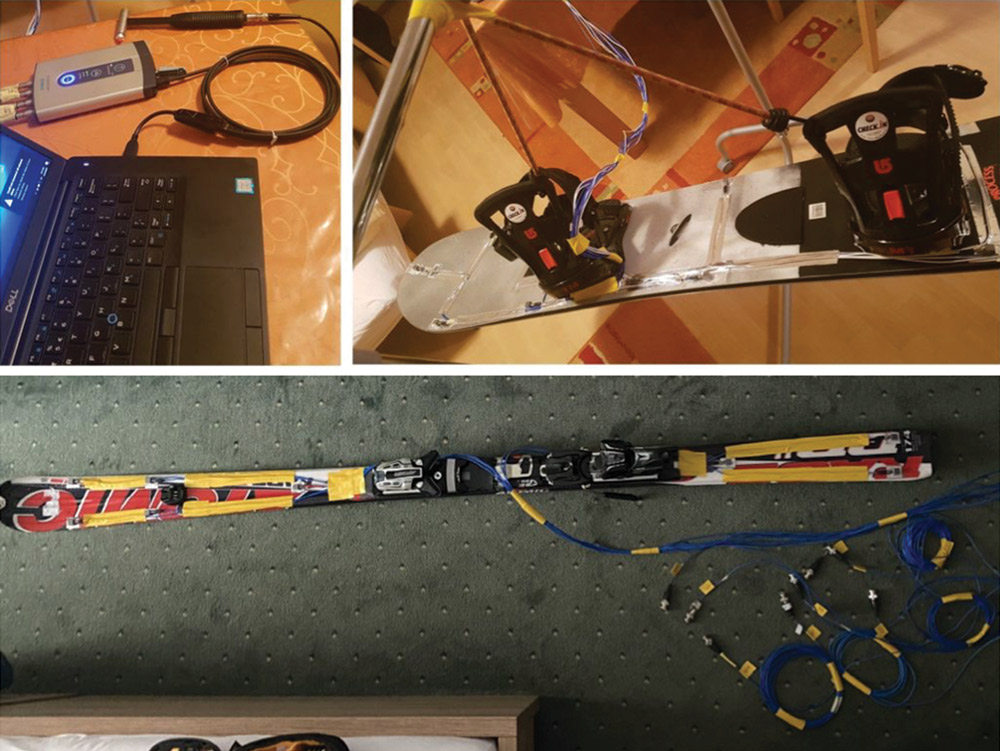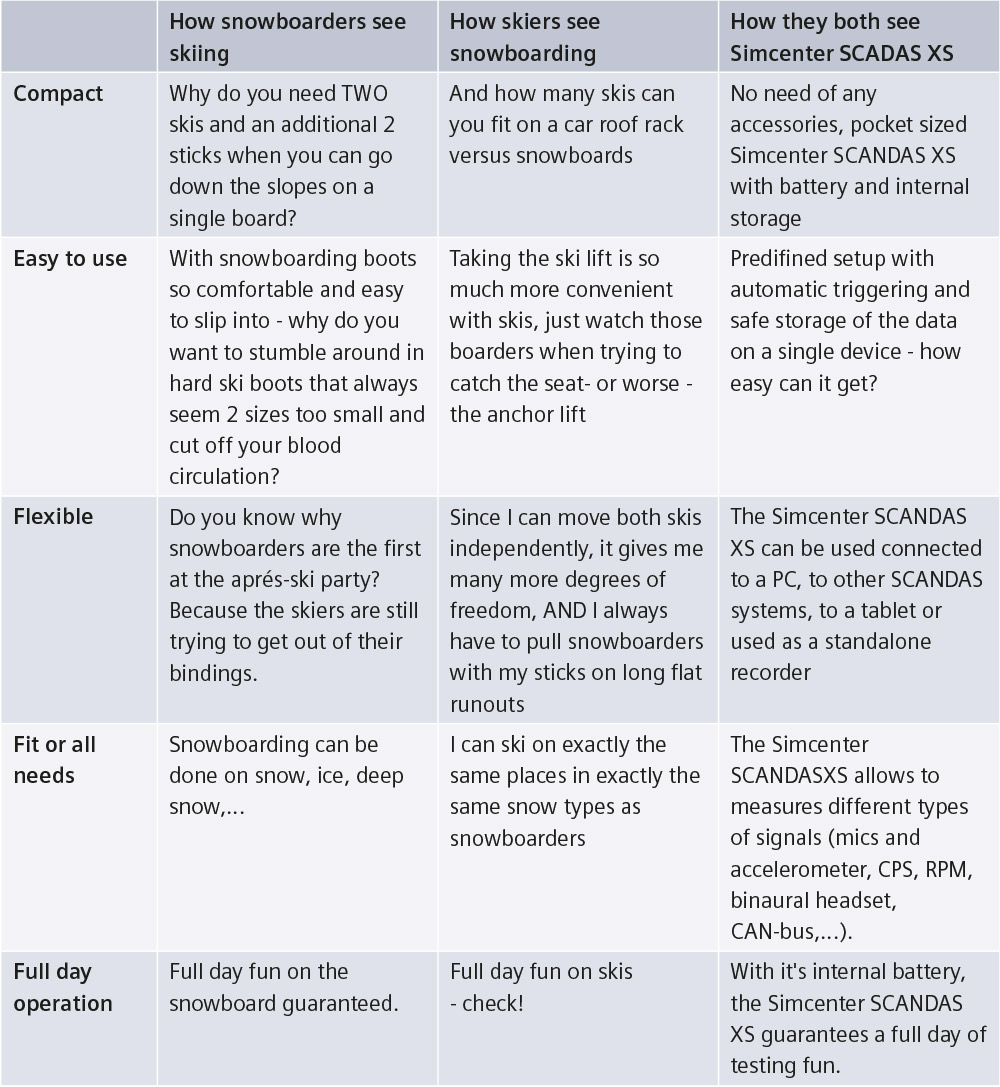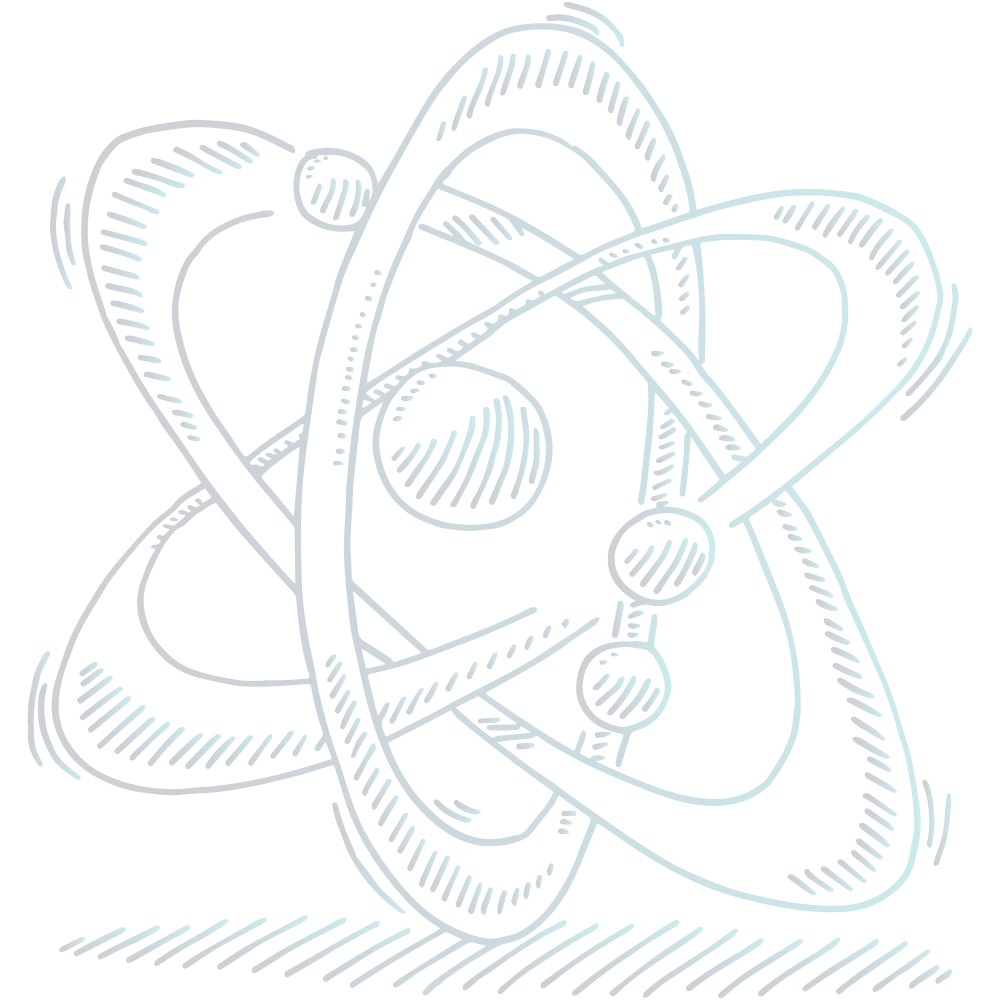Geek hub
Skiing or snowboarding? Which is more scientifically exciting?
By Frank Demesmaeker
Whether you like to ski or to snowboard is, of course, your personal preference. Trying to determine which sport is more exciting risks resulting in endless debates between both parties, which is not the purpose of this article. So, let us try to objectively answer the question through science!
A more relevant and scientific question would be: “how much is your ski or snowboard excited (literally) when going down the slopes?” To answer this, we must look at the physical behavior of their structures.
The operational vibration response of skis and snowboards is an important design parameter for manufacturers; they want a lightweight product with good stiffness, while also damping its operational vibrations. Depending on the specific goal (cross-country, high speed, slalom, freestyle, etc.), different parameters need to be chosen and tuned for optimal performance.
So how do you test all these conditions in a realistic way? A ski or snowboard behaves completely different in free-free conditions, compared to going down the slopes. Think, for instance, about the weight of the boarder standing with both feet on the board, the interaction with different surfaces such as snow, ice and deep snow, and their influence on the vibration response.
To give an answer to the challenge mentioned above, we must get real-life data from operational experimental tests. And as this is ‘reality’ we are dealing with, actually measuring during use will tell us how the snowboard reacts to real operational vibrations. So, during the last winter holidays, we decided to take some test equipment with us and measure on both snowboard and skis!
How we did it
In order to experimentally test the operational vibration behavior, we did a hammer impact test in our hotel rooms, as a first step to identify the natural resonance frequencies and their damping values. The snowboard, then, was instrumented with 12 single axis accelerometers and excited using an impact hammer. All signals were connected to the Simcenter SCADAS XS system and a laptop running Simcenter Testlab Impact testing. For the testing of the skies we’ve focused on one of them and instrumented with 8 accelerometers.
There, in the hotel room, we could already instrument the boards and play around with our computer using Simcenter Testlab for analysis.
The first bending and torsional modes as well as their damping values could be easily identified with Simcenter testing solutions, using the predefined templates for measurement and modal analysis. Both the PolyMAX algorithm and the automatic pole selection allow even novice users to perform an accurate modal analysis.

Top: Impact setup with 12 accelerometers using Simcenter SCADAS XS and Simcenter Testlab
Bottom: Sensors attached to the skis, connected to the Simcenter SCADAS XS
Experimental Modal Analysis based on Impact Testing – first bending and torsional modes
However, by measuring in free-free conditions in the hotel room, we miss the realistic boundary conditions of the snow interaction and the weight of the person on top of the snowboard or the skies.
So… the next step was to take the instrumented gear on the slope and measure the operational vibrations in action. This required a measurement system that was small enough to fit in your pocket, with enough battery autonomy, sufficient local data storage for all the data, and the ability to measure without a laptop.
Taking it to the slopes
Luckily, the same Simcenter SCADAS XS that was used for the PC-based impact test could also be used as a standalone time data recorder. Once it was safely packed in our backpack, the measurement automatically started, based on a trigger set on the g-level of the front accelerometer. This meant that simply “slapping” the ski or the board did the job—there was no need to manually push any buttons.
Pocket-sized Simcenter SCADAS XS used for the measurements on the slope
The only extra precaution was protecting the sensors from the humidity of the snow; covering them with duct tape prevented them from coming loose. In addition, fixing and bundling of the cables needed some extra attention: you do not want the sensor cables to get stuck on the ski lift bars when you try to get off it. But apart from those instrumentation challenges, the actual measurement went very easy and smooth.
Next to the accelerometers, we also connected the GPS sensor, which supplied information on the position, speed, altitude, etc. Also the heart rate was measured (with a strong relation to speed ) and a GoPro was used to record the test. All this data was synchronized and replayed afterwards using Simcenter Testlab Neo. It showed the acceleration data, the time animated deformation of the snowboard, altitude and heart rate, a Google Maps display that showed the trajectory, the synchronized video, and all sorts of other measurements.
Simcenter Testlab Neo Desktop combining different data including GPS, video, animation …
(In case you want to join me for the full descent, click here).
The “dashboard” visualization in the desktop of Simcenter Testlab Neo already gave us a lot of interesting information. However, the final step was to use the operational vibrations to get more realistic resonance frequencies, damping values and mode shapes. This could be done using operational modal analysis.
Operational Modal Analysis results showing bending and torsional modes of the snowboard
Operational Modal Analysis results showing bending and torsional modes of the ski
Fully instrumented snowboard with duct tape protection against snow humidity
Looking at the results from the operational modal analysis shows different mode shapes when comparing to the impact based experimental modal analysis (which was taken in free-free conditions). As expected, the central part hardly moves, while the front and back ends behave like a clamped beam.
Comparison of mode shapes from Operational (left) and Experimental (right) modal analysis
Similarly, different types of slopes, boards and conditions could be compared, such as taking the ski lift:
Measurements on the ski lift

The Results
So, back to our main question: which one is more exciting? Skiing or snowboarding?
In order to be more objective, we came up with the unbiased comparison below, rating both winter sports in 5 categories:
All jokes aside, whether you prefer skiing or snowboarding does not matter, as long as you keep it safe and enjoy your winter holidays (keeping the time spent on gluing accelerometers in your hotel room to the minimum).
And who knows? One day you might also experience the joy of using our Simcenter SCADAS XS and Simcenter Testlab solutions to find out even more exciting things.

